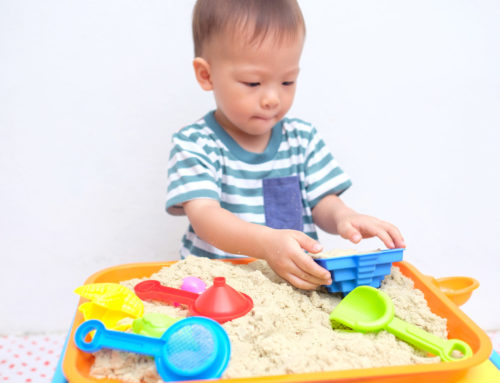Beginning around six months of age, your little one may be ready to start eating solid foods. Making your own baby food may sound complicated but it is incredibly simple and will save your family a lot of money. You can also be confident that you are providing your baby with the freshest, most nourishing foods you can find. Homemade baby foods are also free from preservatives and other additives.
Choosing Ingredients:
Baby food can be made from fresh, canned or frozen fruits and vegetables as long as they do not contain added sugar or salt. When selecting produce, it is important to choose fresh, brightly colored fruits and vegetables that are free from blemishes and soft spots. Farmers markets and other types of farm stands are a great place to find affordable options.
Here are a few examples of some foods that may be appropriate for your baby to start eating as early as six months. Remember to be sure to check with your child’s pediatrician before starting solid foods.
| Brown Rice Cereal Whole Grain Oatmeal Banana Avocado Peaches Plums |
Carrots Sweet Potato Apples Pears Pumpkin Squash |
Getting Started:
Starting with a clean and sanitized preparation surface and utensils is very important to keep your child healthy and safe. Make certain that your hands have been washed with soap and water and that any fresh produce has been cleaned and rinsed thoroughly.
Soft foods, such as avocados and bananas, can be mashed as is and require no other preparation. Hard foods such as carrots, squash and apples require cooking prior to mashing or pureeing in order to make them soft enough for your baby to tolerate. The methods of cooking that retain the most nutrients are steaming and roasting.
Steaming: Cut your produce into uniform 1-2 inch pieces and add to steamer basket. In a large stock pot, add 1-2 inches of water over medium heat. When water is boiling, add the steamer basket and cook until fork tender.
Roasting: Preheat oven to 375 degrees. Cut produce into uniform pieces and bake until fork tender.
When your produce is cooked and has cooled to a temperature you are comfortable with, it is time to turn it into baby food! Place into a blender or food processor and process them until they are completely smooth. Don’t worry if you don’t have a fancy piece of equipment, a potato masher or fork and a little elbow grease can do the trick. There are a lot of fancy gadgets on the market that just aren’t necessary.
Serving and Storing
If you are going to be serving your little one immediately, this would be the time that you can adjust the consistency using expressed breast milk or formula, if desired. You may need to experiment to see what consistency your baby prefers.
Food can be stored in clean containers with tight fitting lids. It is preferable to portion food into small containers that will fit approximately one serving. Homemade baby food can be stored up to 3 days in the refrigerator or in the freezer for up to 1 month.
Remember: Your child is experiencing a new world of tastes and textures. Be sure to offer a wide variety of age appropriate foods. It may take multiple exposures to a new food before your baby accepts it readily. Making mealtime gentle and fun can set your child up for life-long healthy eating habits.
Do you have any tried and true baby food recipes to share?
Michelle Black RD, CLC is a Registered Dietitian Nutritionist at Milwaukee Center for Independence and mother of a 14 month old baby boy.
Easy Homemade Baby Food – Momtastic Wholesome Baby Food
http://wholesomebabyfood.momtastic.com/
Hedstrom, Nellie. “Making Your Own Baby Food.” The University of Maine. Cooperative Extension. Web.
http://umaine.edu/publications/4309e/
Seaman, Tracey and Tanya Wenman Steel. “Mking Baby Food.” Epicurious. Conde Nast. Web.
http://www.epicurious.com/articlesguides/everydaycooking/family/babyfood
Williams, Carolyn Land. “Cooking for Baby.” Cooking Light. MyRecipes Network. Web. http://www.cookinglight.com/food/recipe-finder/baby-purees







